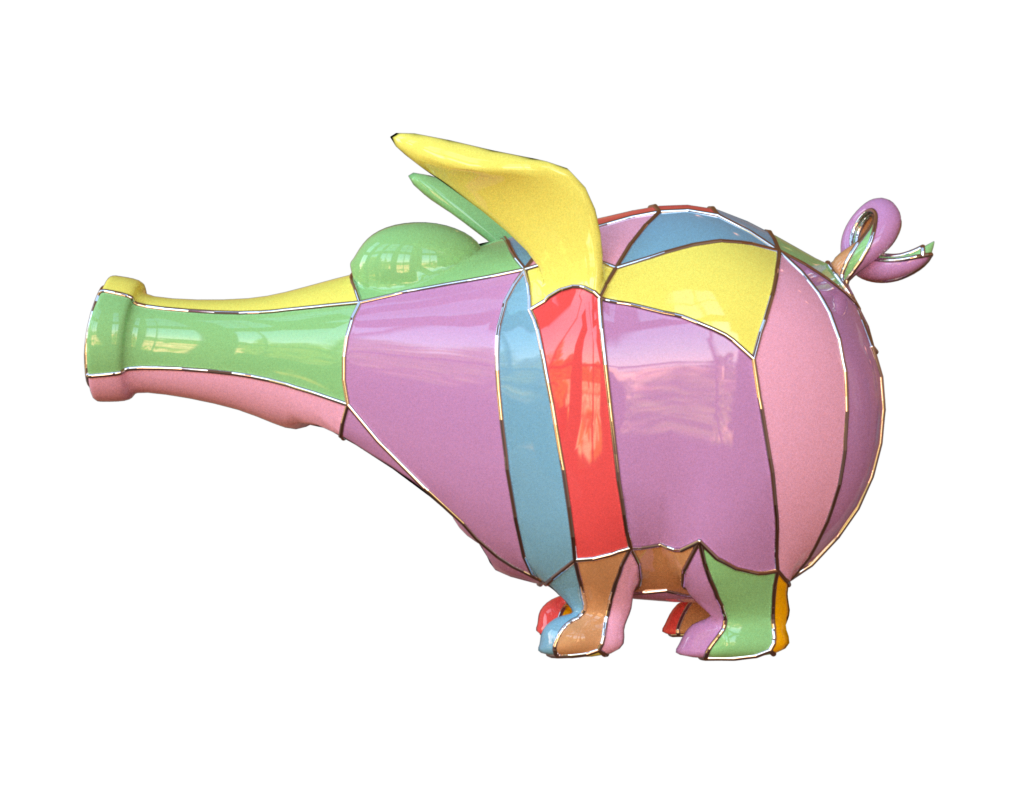Layout Embedding¶
This example aims to provide an alternative visualization for the results from the paper Layout Embedding via Combinatorial Optimization.
Data¶
The data used in this example was generated by the official released code:
Code¶
#!/usr/bin/env python
import hakowan as hkw
from data import load_data
# Step 1: Preprocess data.
ref_mesh, chains_mesh = load_data()
# Step 2: Generate layout layers.
base = hkw.layer(ref_mesh)
# Mesh layer contains the base geometry.
# Use chart attribute as scalar field texture.
mesh_layer = base.material(
"Principled",
color=hkw.texture.ScalarField("chart", colormap="set1", categories=True),
roughness=0.0,
metallic=0.0,
)
# Chain layer contains the layout boundaries.
chains_layer = (
hkw.layer(chains_mesh)
.mark("Curve")
.material("Conductor", "Cr")
.channel(size=0.02)
)
# Update camera location for better viewing angle.
config = hkw.config()
config.sensor.location = [3, 0, 0]
# Step 3: Render the both layers.
hkw.render(mesh_layer + chains_layer, config, filename="results/pig_embedded.png")
# Step 4: Render the mesh layer with glass material.
mesh_layer = base.channel(material=hkw.material.ThinDielectric())
hkw.render(mesh_layer + chains_layer, config, filename="results/pig_embedded_glass.png")

